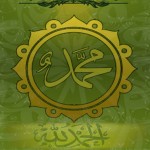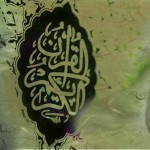Sura At-Tin : Existential History of Mankind
This short, 95th sura of Holy Quran has been revealed in Mecca and has been named as Tin, since it starts with an oath to Fig and Olive in the first ayat. Tin means Fig and Zeytun means Olive.
Why the oath to fig and olive and what is its significance to creating of mankind and our journey?
There are many different interpretations of the first ayat in many different tafsir schools. One interpretation is that the first three ayats should be read and understood as a whole:
By the Fig and the Olive,
And the Mount of Sinai,
And this City of security,-
We have indeed created man in the best of moulds, (At-Tin 95/1-4)
First, it is clear that traditional mufassirs have agreed upon the fact that “city of security” is Mecca where Prophet Muhammed(saw) received first the revelation. Mount Sinai is the same place for Prophet Moses(as), therefore Fig and Olive stand symbolically there to represent geographical locations. There are many different opinions about which locations Fig and Olive represent but mufassirs agree that Fig stands for a name of mountain where Prophet Abraham(as) had the first contact with angels and Olive stands for the mountains where Prophet Solyman(as) received Allah(j.j)’s message.
So these locations represent corner-stones for mankind’s history where they have been blessed with holy messages of their creator.
Holy Quran emphasizes the essence of these locations and then makes the primal fact about our existence that we have been created “in the perfect shape” both spiritually and physically.
Some other mufassirs, mostly contemporary, argue that since this sura mostly tells us about our creation process, fig and olive are two elemental foods that has been feeding mankind in many ways, they are just food, not symbolic geographical locations. However, fig represents male productivity and olive represents female fertility since fig has many small seeds and olive has one big seed.
Further more, we read in the sura that despite the perfection in his creation, mankind has the potential and tendency to be “lowest of all” because of his free will. When man uses his free will to divert himself from the divine message that all prophets brought us, he will “fall down”
Then do We abase him (to be) the lowest of the low (At-Tin 95/5)
Here “asfala safileena” means the lowest level. As usual, our creator gives us the clue how to stay away from such humiliation:
Except such as believe and do righteous deeds: For they shall have a reward unfailing. (At-Tin 95/6)
In 8 plain ayats, Allah(j.j) gives us a very short summary of mankind’s creation and essential historical “pin-points” where we are reminded by location about the divine message prophets brought us and core substance of our creation which can lead to both good and evil ways and basic guidance on how to stay on the right path.
Finally, after we have quick yet sharp reminder of our creation and existential journey, we are also reminded about our final destination, which is the judgement day:
Then what can, after this, contradict thee, as to the judgment (to come)?
Is not Allah the wisest of judges? (At-Tin 95/7-8)
We always stress the importance of the fact that Holy Quran manages to tell us so much in such short ayats because it is extra-essential in today’s world where mankind is exposed to piles of gigantic amount of unnecessary disinformation which he will never benefit from.
Baris Tarimcioglu/islamoformation.com









You must be logged in to post a comment Login